
Knowledge of breastfeeding is essential towards successful and rewarding breastfeeding journey.
The journey will be much easier once there is better understanding of the potential issues that one may encounters. This is particularly true for the first-time mothers.
What is colostrum?
The milk that first flow out from your breasts right after delivery is called colostrum. Colostrum is thick and yellowish in colour. It is rich in protein and antibodies and is easily digestible. By around third to fourth day after birth, you will begin to produce mature milk that will gradually replace the colostrum.
What is foremilk and hindmilk?
At the start of your breastfeeding session, your breasts will produce what we call foremilk. It's thinner and contains many proteins and vitamins. As your baby nurses on, hindmilk will be produced. It's creamier in colour and texture because it contains more fat.
Breastfeeding benefits both the mothers and babies
Benefits of breastfeeding for babies
Benefits of breastfeeding for mothers
To ensure successful breastfeeding session, your baby should be positioned properly to the breast. Correct positionings include:
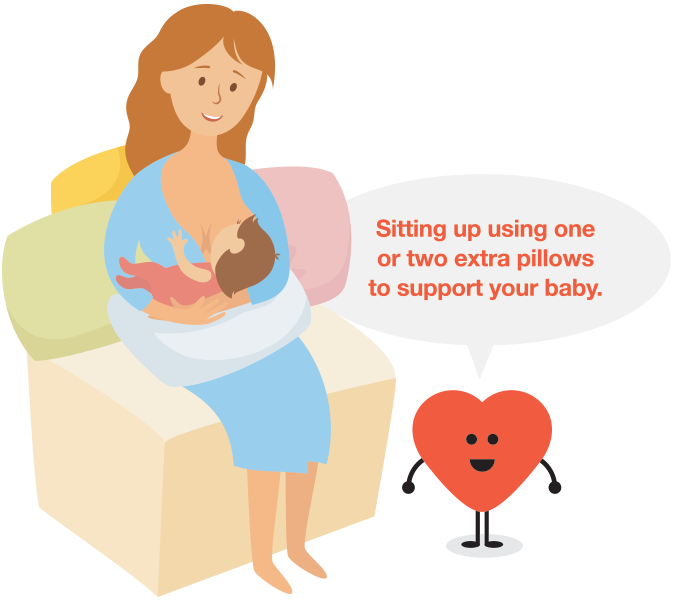
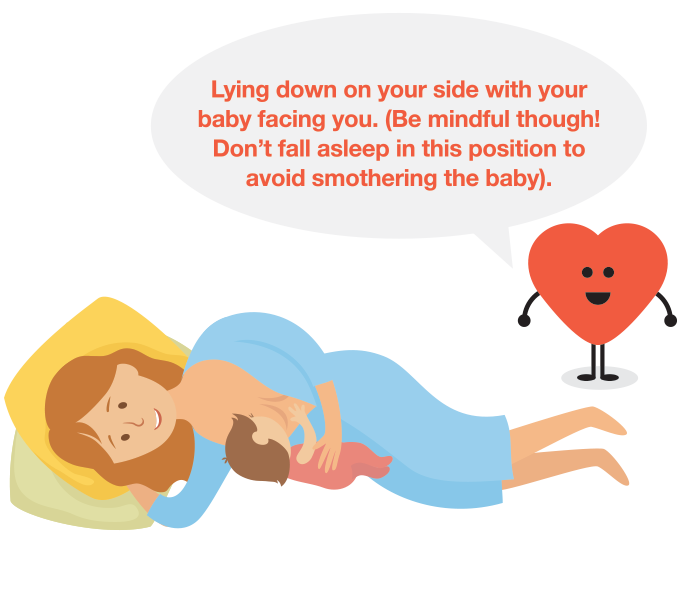
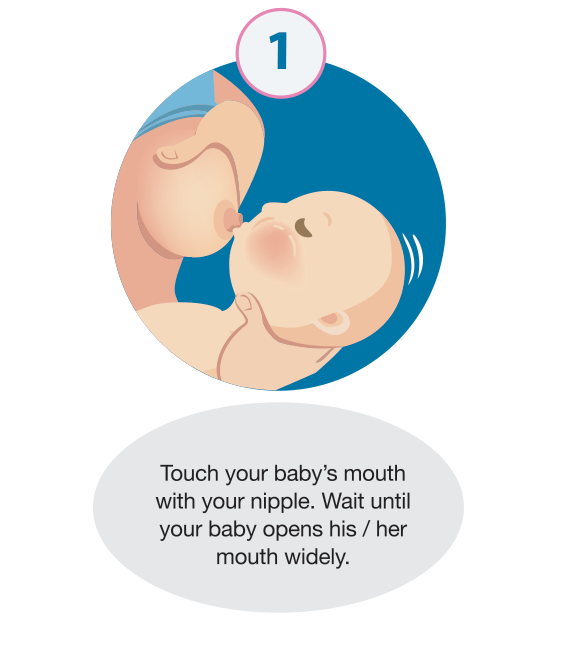
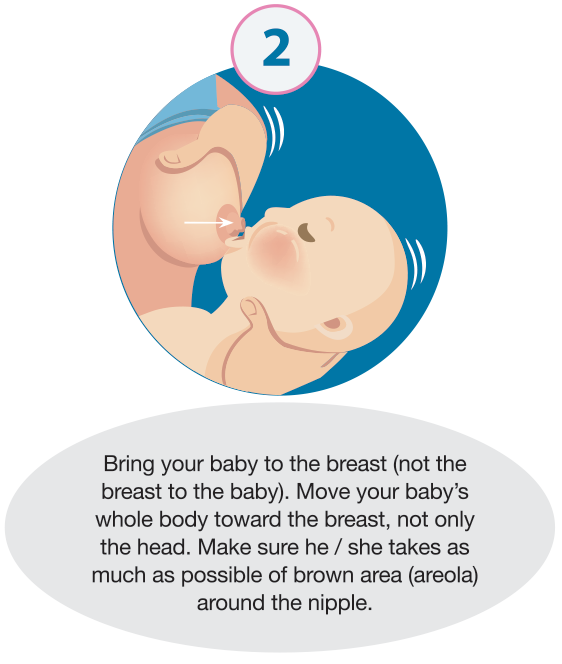
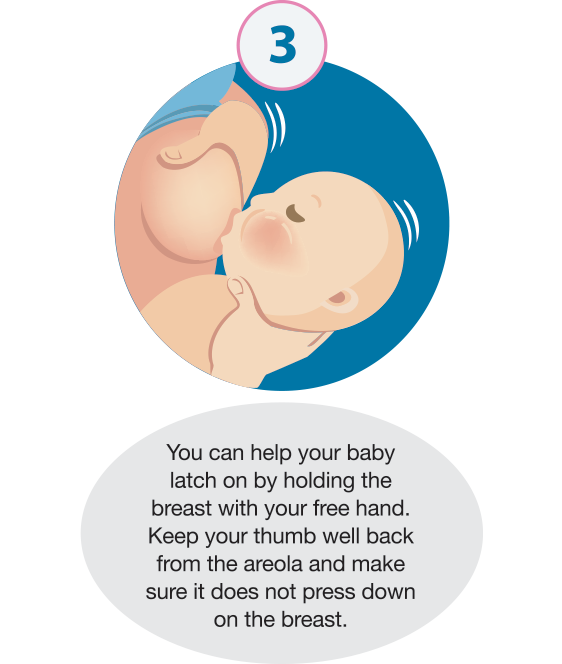
Poor attachment may impair flow of milk and eventually leads to breast engorgement.
Therefore, here’s what should go on inside your baby's mouth when he's attached and feeding properly.
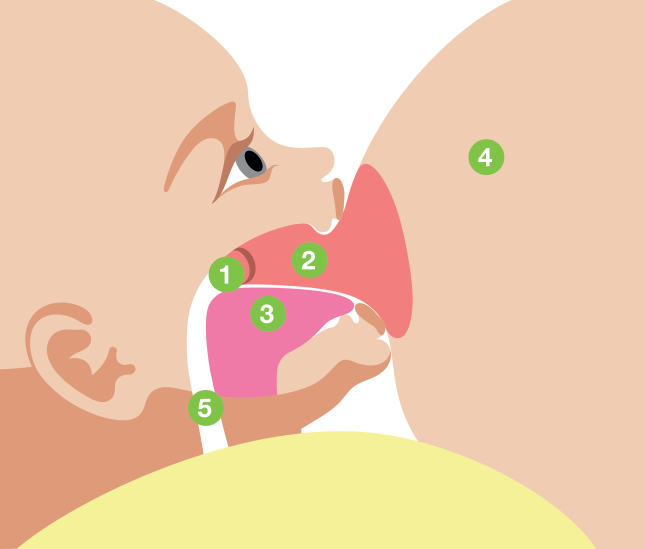
Signs of poor attachment include:
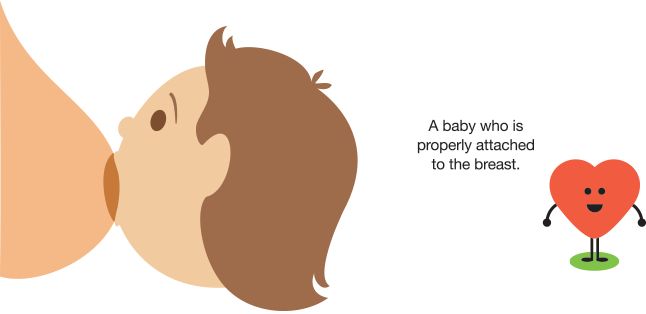
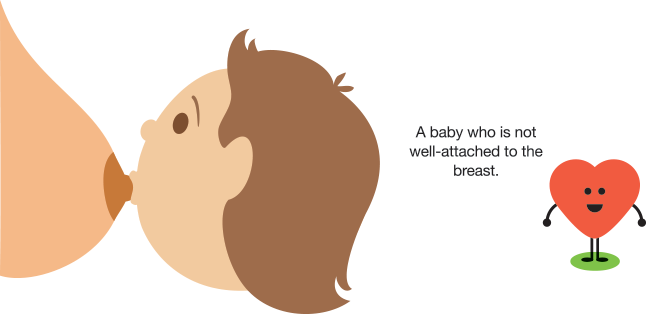
Many mothers who breastfeed are worried if their babies are getting enough breast milk. After all, you could not really measure how much milk your baby is taking in, unless if you are expressing and feeding from a bottle.
If your baby is feeding well, they should:
The following are also features that your baby is most probably feeding well:
It is normal for your breasts to become fuller, heavier and a little sore as they begin to produce more milk.
Breast engorgement occurs when you are unable to nurse frequently or empty your breasts completely.
Regular feeding helps to prevent engorgement. Even though you may only be producing a small volume of milk right after delivery, it still helps to clear as much of milk as possible from your breasts by increasing nursing frequency or expressing it out.
When your baby is not feeding as much, express the milk at least every three hours helps to avoid painful breast engorgement.
If you feel very engorged and yet have difficulty expressing the milk, apply a hot pack around your breasts. Warmth helps to encourage milk let-down and prevent clogged ducts, while a cold pack is useful to relieve swelling and engorgement.
Milk expression schedule
If you are a working mother, have a milk expression schedule and stick to it. Routine helps you to have your work life balance besides your pumping duties while ensuring continuous milk supply to your baby. It is also helps to prevent breast engorgement while you are away from your baby.
How to store your breastmilk
Proper milk storage is important:
Instead of washing the breastfeeding kit every time after used, you can wash it once a day with hot soapy water. Rinse well and sterilise it before use.
The World Health Organization (WHO), recommends all mothers to exclusively breastfeed their babies up to six month-old and continue breastfeeding with appropriate food up to two years.
Several problems are commonly encountered during breastfeeding. These include:
Mothers need to know that you are not alone when they face challenges during their breastfeeding journey. Many mothers have similar difficulties too.
The reality is that breastfeeding is not always a bed of roses. You need to work on it, and it may not be easy for some women. In fact, most may struggle a little at the beginning. Nevertheless, practice makes perfect. With practice, experience and time, the whole journey will become much easier.
It is normal not to have a lot of milk in the initial period. Do not worry and stress. Continue breastfeeding and keep going. Breastfeed your baby on demand; as the more you feed, the more milk will be produced.
Once you get into the routine, you will become more accustomed to it. With familiarity, comes confidence. Eventually, you will find yourself looking forward to the nursing session.
If you are facing challenges and need help with breastfeeding, do make an appointment with the Consultant Obstetrician and Lactation Consultant at Pantai Hospital today.

